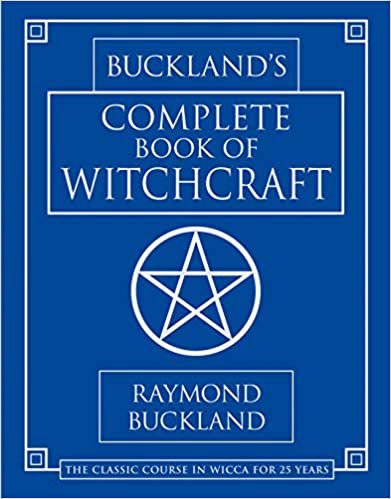Copyright © 2002 Gray Seal
In many books you have read, you have probably been instructed to “create scared space” or “cast a circle” and may have felt confused about just what exactly, you were suppose to do and why. Creating scared space or casting a circle means that you are changing the energy configuration of a room or space within a room to an energy which is neutral, cleansed of any nonessential vibrations that may not be helpful or may even be jarring to the ritual or ceremony that you are about to perform. Casting a circle contains, focuses and intensifies the energies that you will raise during your rite. By clearing, cleansing and sealing a space for your rites, the magickal energy can be contained and built up for the proper moment of release into the universe.
You cleanse and focus the energies within the shape of a circle because it is a circular motion that magickal energies move. Just as our planet is round, it also rotates in a circular motion each day and moves in a circular motion around the Sun. Haven't you noticed that when you let the water out of your bathtub, the water swirls in a circle as it moves down the drain?
The creating of sacred space or casting a circle can be as complex or as simple as you want to make it. The main components regardless of the way you choose to do it are that you lay out the size of your space, mark the perimeters, cleanse the interior and take it down or release the energies at the end of your ritual.
Before you begin your ritual, you will need to decide if it is an internal or external working. In other words, is it a working that affects your subconscious mind like the one to recall past life memories or to rid yourself of bad habits? Then it is an internal working- it affects you internally. If it is a ritual to affect the world around you- a prosperity spell or one to fine the perfect job or home- then it is an external working. The reason you care is that for internal workings you will create sacred space by directing the energies in an anticlockwise (widdershins) direction, which helps to draw the energies inward. For external workings you will create sacred space by moving and directing the energies in a clockwise (deosil) direction, which spreads the energies and sends the energy outwards. If you will be casting a circle inside, clear the room of chairs, tables and anything that might obstruct your movements in any way as you move around the circle. If you will be outside, clear the area of rocks and sticks that you might painfully step on and choose a location that is relatively flat.
Assemble all the necessities of your rite (candles, incenses, oils, magickal tools, charcoal, matches, salt, water and any odds and ends you want) on your alter which will be set up in the center of the circle facing NORTH. When you set up your alter, place all of your tools on it in a balanced manner and put one lit White candle (called the flame candle) in the center of the alter. The Flame candle is optional but always a good addition to any rite. In each of the directions, place a candle at the edge of your circle for the Quarters. You will begin by going to the north or east quarter of your circle. You will decide for yourself which quarter or direction you will begin- some people who practice a Nature Oriented spirituality begin in the north, others who follow western ceremonial magickal traditions begin in the east for it is there that the Sun rises. If you use a ritual knife, raise it high in the air above your head and begin to fill it with energy from the universe around you, then drop your arm pointing the knife at the ground and send energy out of the knife into the ground, tracing the perimeter of the circle in a line of energy as you walk the inside of the perimeter, making sure you are marking out enough space to work in comfortably. If you do not use a knife, simply, raise your writing arm over your head, fill yourself with energy and then drop your arm sending the energy out of your hand as you mark the perimeter of the circle. The later of the two is more personable to many but you can chose either one. They both are great examples.
Go to the alter in the center of the circle and pour some spring or distilled water into your chalice, then add 3 or 4 pinches of salt (for the element Earth). Go to the North or the East (wherever you started when you drew out your Circle) and sprinkle the salt/water as you walk the Circle completely, feeling the elements of Earth and Water cleansing the area and balancing it. If you wish to add a chant as you cleanse the Circle, it can help you concentrate and visualize the cleansing even better. Return to the alter and light your charcoal in your incense burner with the Flame candle. Let the charcoal ignite completely then drop a small amount of incense onto it (this can be the incense specifically for your rite or a traditional cleansing incense such as Frankincense of Sage leaves). Go to the same starting quarter and cense the circle as you walk the perimeter again with your incense burner. This represents the elements of Fire and Air. Again, feel the elements of air and fire cleansing the area and balancing it. If you feel that the censing is only for the element of Air, then you can also add one more step with a White candle starting and finishing in the same fashion as before, with the water and incense, to represent the element of Fire. Now is the time to call or invoke the Quarters. This means that you are inviting the energies of each of the elements, Earth, Air, Fire, and Water, to bring power and balance to your circle. Earth is associated with the North Quarter, Air is associated with the East Quarter, Fire is associated with the South Quarter and Water is associated with the West Quarter. Once again, go to your starting quarter. Meditate on the qualities of that element (see elemental correspondences).


